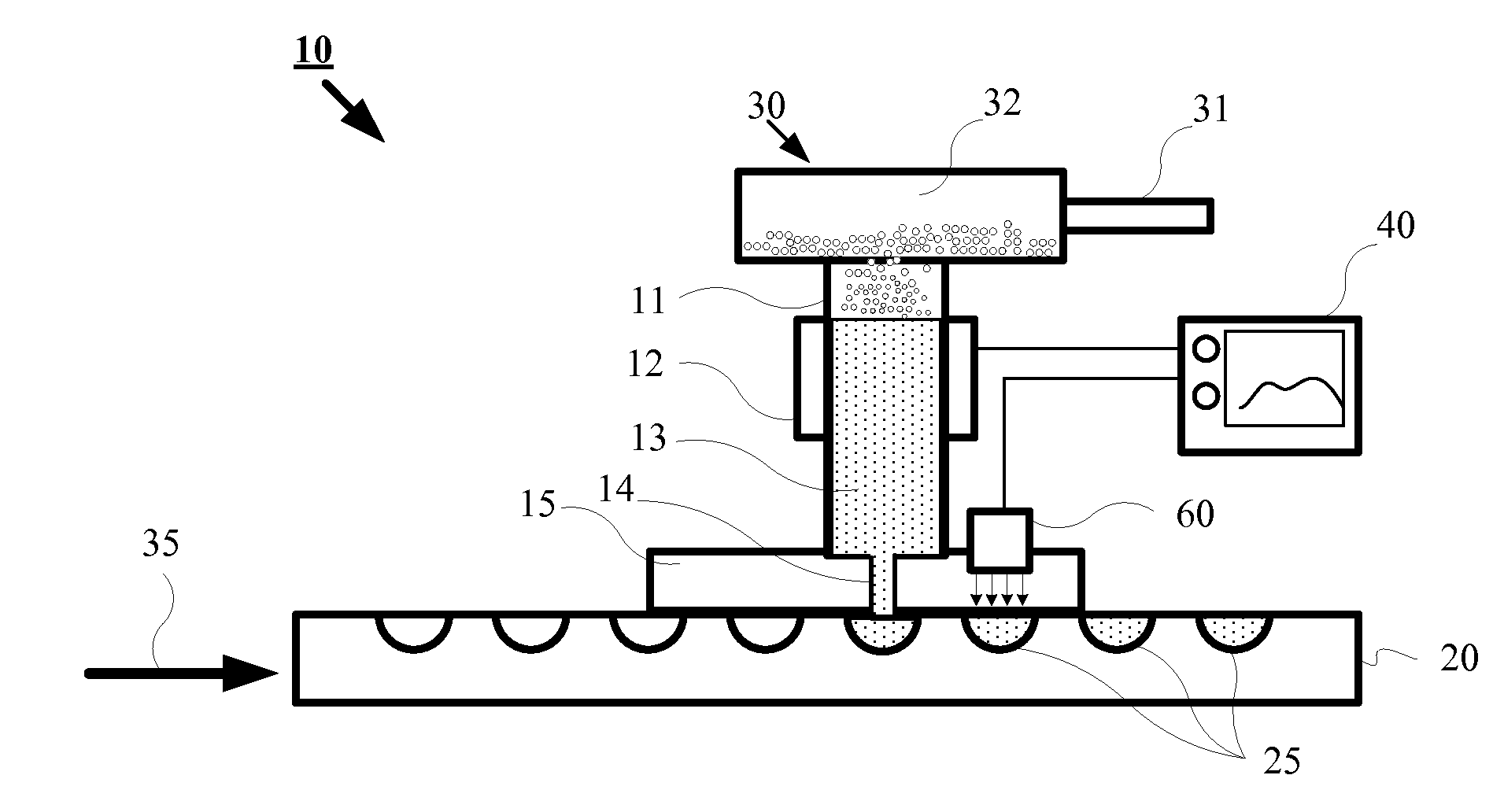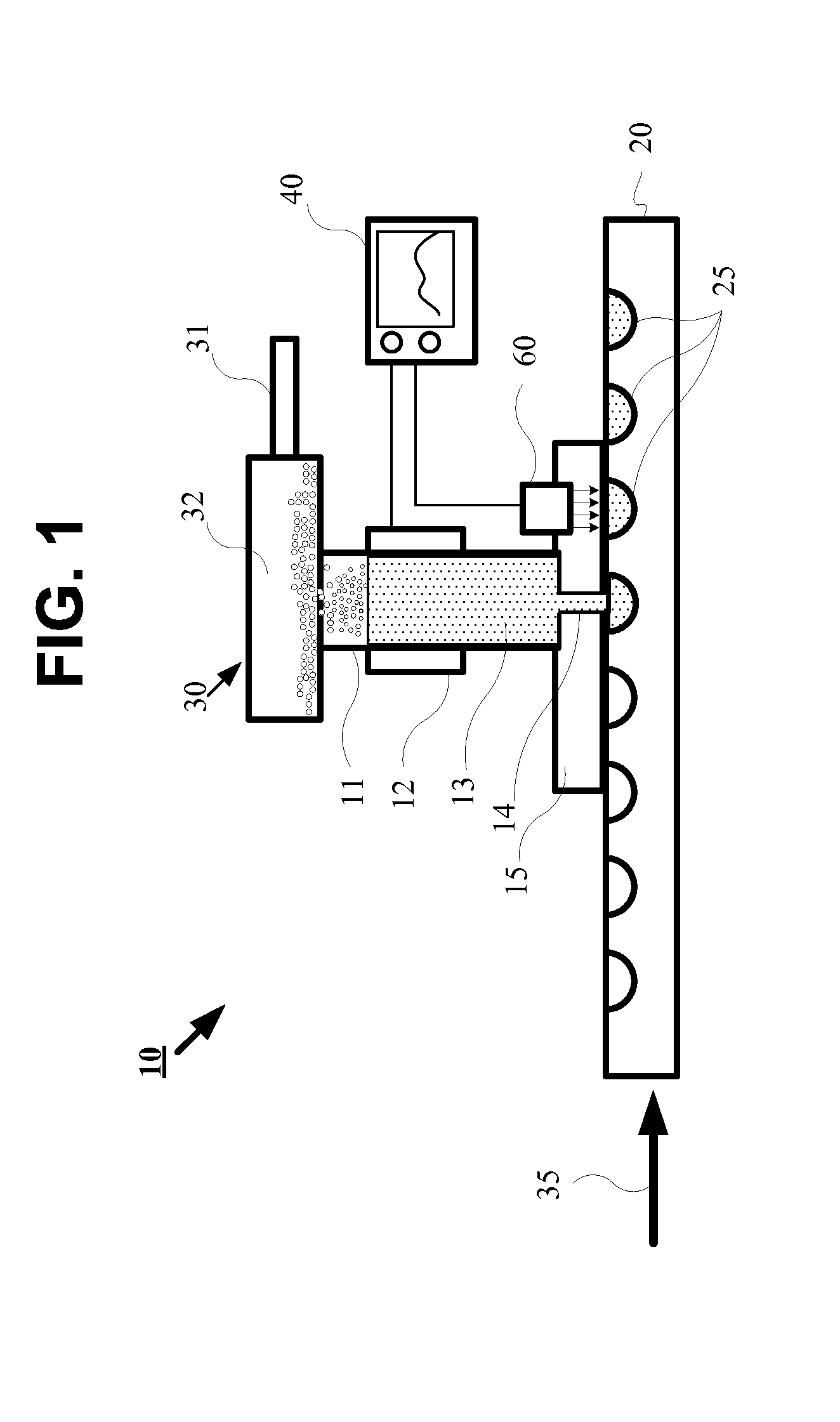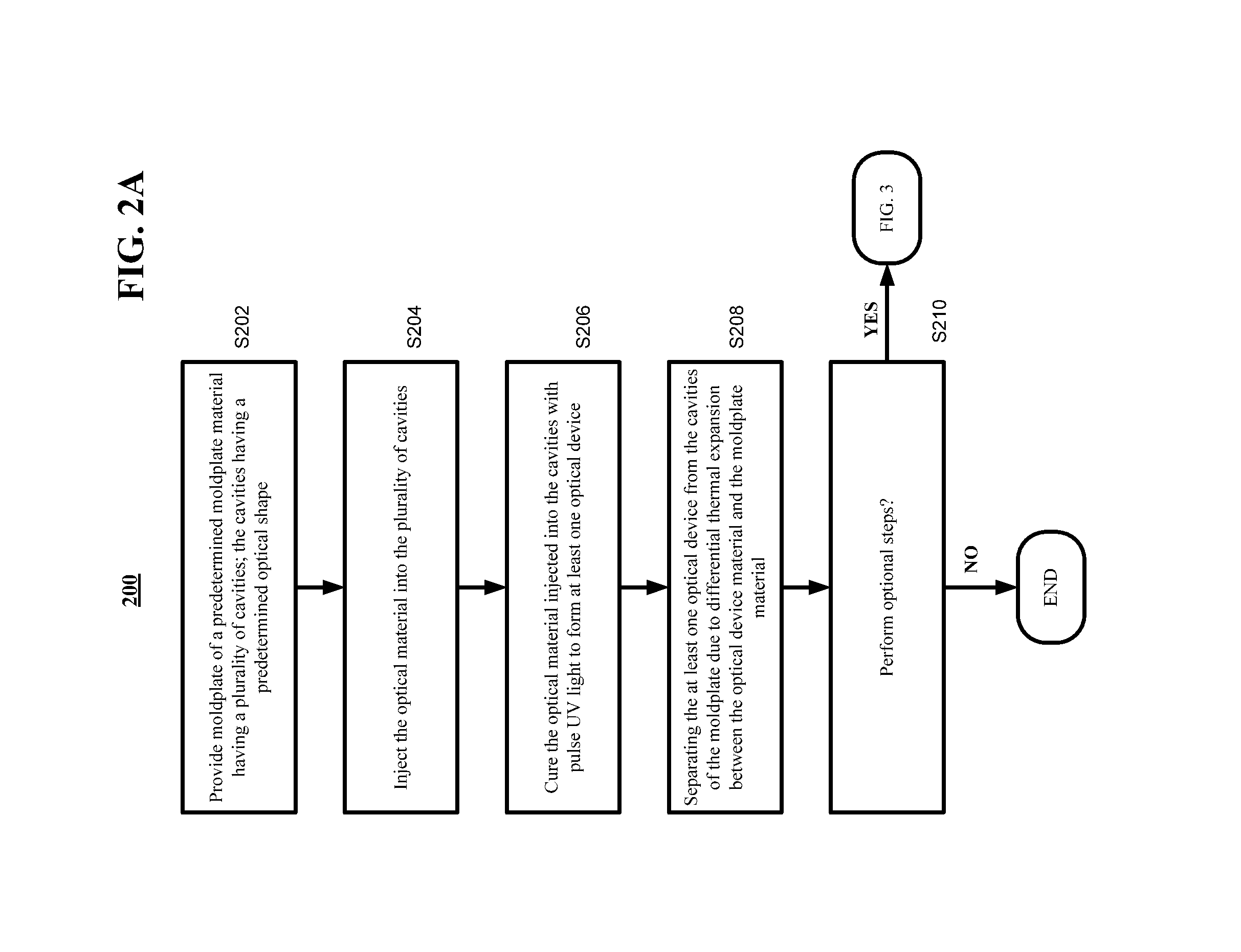Enhanced separation of injection molded microlenses for high volume manufacturing
a microlense and manufacturing technology, applied in the field of injection molding objects, can solve the problems of difficult removal of disadvantageous to the overall production process of optical devices, and difficulty in removing newly formed optical devices from moldplate cavities, etc., to achieve rapid curing of optical materials, facilitate expedient removal of optical devices, and control the effect of differential thermal expansion
- Summary
- Abstract
- Description
- Claims
- Application Information
AI Technical Summary
Benefits of technology
Problems solved by technology
Method used
Image
Examples
Embodiment Construction
[0016]The terminology used herein is for the purpose of describing particular embodiments only and is not intended to be limiting of the invention. As used herein, the singular forms “a”, “an” and “the” are intended to include the plural forms as well, unless the context clearly indicates otherwise. It will be further understood that the terms “comprises” and / or “comprising,” when used in this specification and claims, specify the presence of stated features, integers, steps, operations, elements, and / or components, but do not preclude the presence or addition of one or more other features, integers, steps, operations, elements, components, and / or groups thereof. In the following description, reference is made to the accompanying drawings where like reference numerals refer to like parts throughout the disclosure.
[0017]Because the embodiments of the present invention are partly based on the concept of thermal expansion, it is convenient to discuss such a concept bef...
PUM
| Property | Measurement | Unit |
|---|---|---|
| shrinkage | aaaaa | aaaaa |
| temperature | aaaaa | aaaaa |
| CTE | aaaaa | aaaaa |
Abstract
Description
Claims
Application Information
 Login to View More
Login to View More - R&D
- Intellectual Property
- Life Sciences
- Materials
- Tech Scout
- Unparalleled Data Quality
- Higher Quality Content
- 60% Fewer Hallucinations
Browse by: Latest US Patents, China's latest patents, Technical Efficacy Thesaurus, Application Domain, Technology Topic, Popular Technical Reports.
© 2025 PatSnap. All rights reserved.Legal|Privacy policy|Modern Slavery Act Transparency Statement|Sitemap|About US| Contact US: help@patsnap.com



